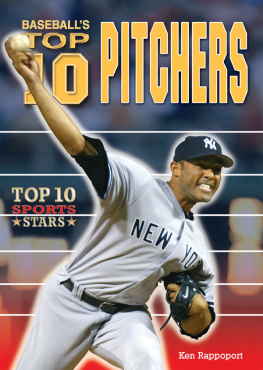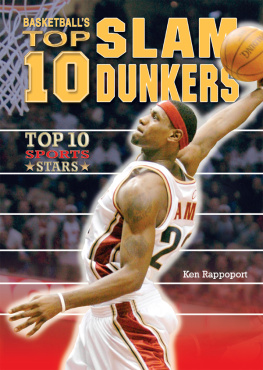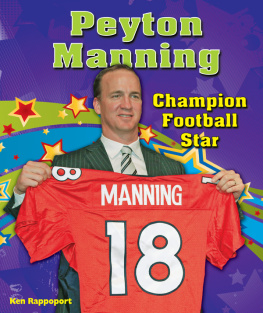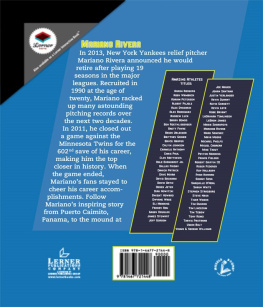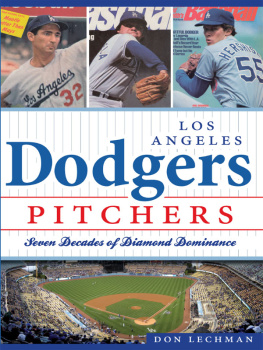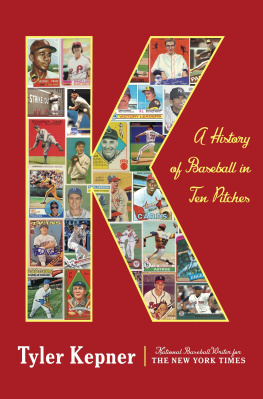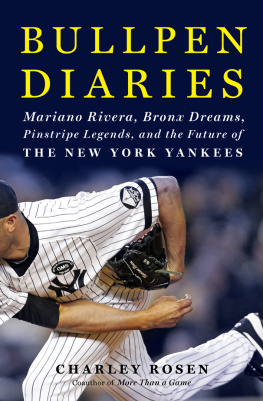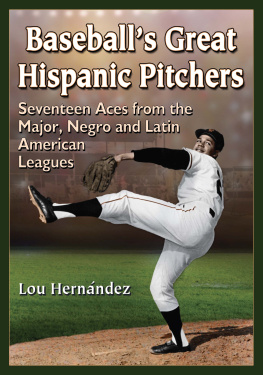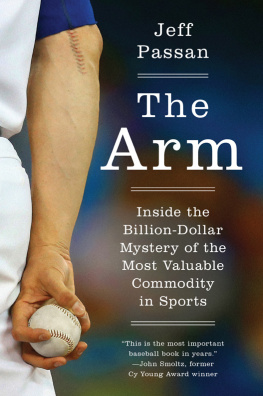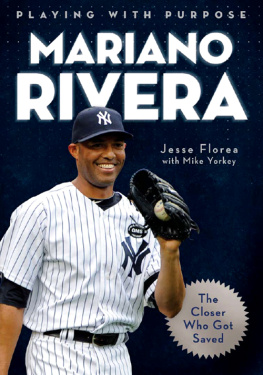THE GREATEST PITCHERS OF ALL TIME!
Who are the greatest pitchers in the history of baseball? What makes a pitcher great? From the heroes of yesterday like Cy Young to modern superstars like Mariano Rivera, Ken Rappoport looks at ten of the greatest ballplayers to ever stand atop a major-league pitcher's mound.
About the Author
Ken Rappoport is a professional sportswriter with dozens of books to his credit. Titles he has previously authored for Enslow Publishers, Inc., include LeBron James: King On and Off the Court and Tim Duncan: Star Forward.

Who is Cy Young?
Baseball fans are familiar with the Cy Young Award, given to the best pitcher in each major league every year. Some things not generally known about Denton True Cy Young: He threw the first pitch in the first World Series, pitched the first perfect game in modern baseball history, and was the first pitcher in the big leagues to play a consistent starring role in his forties.
Considering that Young bridged the gap famously between the early baseball days and the modern era (starting in 1900), any talk about pitching greats usually starts with him. Young, who recorded an incredible 511 victories, leads the power-packed pitching staff of Baseballs Top 10 Pitchers.
Also included are two other pitchers who defied age: Satchel Paige and Warren Spahn.
Like Young, Paige was responsible for a number of firstsincluding being the first African-American pitcher to appear in a World Series and the first African American to gain entry into the Hall of Fame. Because his arrival in the big leagues was delayed by racial segregation, Paige became the oldest rookie in major league history at the age of forty-two.
Spahn, who won more games than any other left-hander in baseball history, hurled a no-hitter at the age of forty. Before Nolan Ryan completed his record seven no-hitters, no one with the exception of Young had pitched a no-hitter at that age.
The Top 10 list is not decided on numbers alone. Paige, for instance, helped shape baseball history during a time of integration in the majors. And Sandy Koufax showed the true meaning of courage outside a baseball diamond because of his deep religious convictions.
And where would a Top 10 book be without a relief pitcher, a position that has become more noticeably important over the years? Try Mariano Rivera to represent them all as the top stopper.
From Young to Rivera, here then are baseballs ten best of the best.

Image Credit: courtesy of the Everett Collection, Inc.
The Philadelphia Phillies were in a rush to get out of town. It was the 1916 season. The Phils had just won the opener of a doubleheader in Cincinnati behind ace pitcher Grover Cleveland Alexander.

Image Credit: Associated Press/Wide World Photos
But there was the matter of playing the second game before making their train. Phillies manager Pat Moran turned to Alexander, his fast-working pitcher. Ill have to ask you to pitch the second game, too, Moran reluctantly told Alexander. Weve only a little more than an hour to catch the train. Get it over fast, Pete.
Old Pete, as Alexander was sometimes called, did just thatshutting out the Reds in less than an hour. It was a typical performance by one of baseballs most efficient pitchers.
With one of the best curveballs in baseball, Alexander was a fast worker with pinpoint control. In a career that spanned from 1911 to 1926, he recorded a record 90 shutouts and 373 victories. He won 28 games in his very first seasonthe best rookie season ever for a pitcher.
From 1911 to 1917, Alexander won 190 games one-third of his teams totalwhile pitching in Philadelphias Baker Bowl, a hitters ballpark with a right-field wall just 272 feet from home plate. Alexander led the Phillies to their first pennant in 1915.
After the 1917 season, the Phillies sold Alexander to the Chicago Cubs. A draft notice came soon after. Alexander became part of the American fighting forces in World War I.
Returning from the war with shell shock and a partial hearing loss, Alexander also suffered from epilepsy, which causes seizures and an involuntary shaking of the body. Medicines in that day were not effective, and the disease was impossible to control. He tried different measures, including sipping ammonia and drinking alcohol.
Alexander nevertheless won 128 games for the Cubs, even while entering a sanatorium with a drinking problem. He was traded to St. Louis in the midst of the 1926 season. Although his skills had eroded, Alexandernamed after a United States presidentstill had enough left to be a World Series hero at the age of thirty-nine.
It was the 1926 Series. Alexander pitched the Cardinals to a complete-game victory in Game 2, then hurled another complete game in Game 6 to send the Series into a deciding seventh game.
In the seventh inning of Game 7, Alexander was called into the game with the bases loaded and two outs. Alexander looked around to see the three Yankees leading off base and said: Theres no place to put the batter. I reckon Id better strike him out.
Which he did, on three pitches. Then Alexander pitched two more hitless innings to close out the 26 Series for the Cardinals over a powerful Yankee team that included Babe Ruth and Lou Gehrig.
It was a game and a player to remember for the ages.

Image Credit: Associated Press/Wide World Photos
BORN:
February 16, 1887, Elba, Nebraska.
DIED:
November 4, 1950, St. Paul, Nebraska.
PRO CAREER:
Philadelphia Phillies, 19111917; Chicago Cubs, 19181926; St. Louis Cardinals, 19261929; Philadelphia Phillies, 1930.
RECORDS:
Won 373 games and pitched 90 shutouts, both National League records. His victory total ranks third on the all-time list.
Lefty Grove was in a tight spot. The tying run was on third base with nobody out in the ninth inning and the heart of the New York Yankees batting order coming up: Babe Ruth, Lou Gehrig, and Bob Meusel.

Image Credit: Associated Press/Wide World Photos
The Philadelphia Athletics pitcher took a deep breath as Ruth, baseballs home run king, stepped into the batters box. Just as quickly, Ruth went down on three straight strikes.
Then came Gehrig, the other half of baseballs greatest one-two punch. No problem. Grove set down the Iron Horse on three straight strikes.
Finally, the dangerous Meusel stepped in. Grove didnt waste any time, striking out Meusel on three pitches as the As beat the Yankees 1-0.
It was one of Groves favorite moments in a seventeen-year career. Pitching for the Athletics and Boston Red Sox from 192541, Robert Moses Grove led the American League in earned run average nine times, in strikeouts for seven straight years, and in winning percentage five times. The 6-foot-3 southpaw was the anchor of a strong Philadelphia staff that helped the As win three pennants and two world championships.

